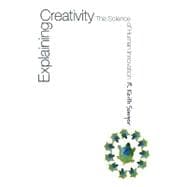
What is included with this book?
| Part I Conceptions | |||||
|
3 | (6) | |||
|
9 | (26) | |||
| INTERLUDE 1 Defining Creativity | 35 | (4) | |||
| Part II Individualist Approaches | |||||
|
39 | (18) | |||
|
57 | (20) | |||
|
77 | (20) | |||
|
97 | (16) | |||
| INTERLUDE 2 From Individual to Context | 113 | (4) | |||
| Part. III Contextualist Approaches | |||||
|
117 | (20) | |||
|
137 | (18) | |||
|
155 | (18) | |||
| INTERLUDE 3 Applying Individualist and Contextualist Approaches to Creativity | 173 | (4) | |||
| Part IV Artistic Creativity | |||||
|
177 | (28) | |||
|
205 | (18) | |||
|
223 | (20) | |||
|
243 | (16) | |||
| INTERLUDE 4 Goodbye to Our Creativity Myths | 259 | (4) | |||
| Part V Everyday Creativity | |||||
|
263 | (18) | |||
|
281 | (14) | |||
|
295 | (20) | |||
| Epilogue | 315 | (4) | |||
| References | 319 | (28) | |||
| Index | 347 |
The New copy of this book will include any supplemental materials advertised. Please check the title of the book to determine if it should include any access cards, study guides, lab manuals, CDs, etc.
The Used, Rental and eBook copies of this book are not guaranteed to include any supplemental materials. Typically, only the book itself is included. This is true even if the title states it includes any access cards, study guides, lab manuals, CDs, etc.